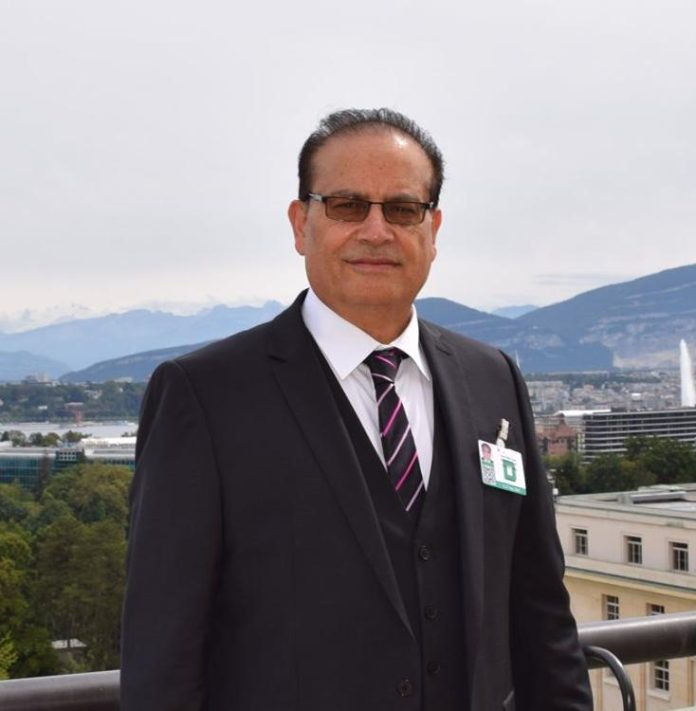By Qamar Bashir
After months of tension, failures, and near breakdowns, the United States and China finally struck a landmark trade agreement that has reshaped the global balance of economic power. The negotiations culminated in Busan, South Korea, on October 30, 2025, where President Donald J. Trump and President Xi Jinping met face to face to seal a compromise that blended hard politics with pragmatic economics. What began as another episode in Trump’s “America First” campaign ended as a stunning reversal of Washington’s long-held trade strategy. For the first time in decades, the United States found itself negotiating not from a position of dominance, but parity—perhaps even vulnerability—with an economic rival that refused to bow to pressure.
The Busan summit produced an agreement that went far beyond tariff adjustments. It marked a recalibration of two superpowers’ economic engagement, with provisions covering tariff reductions, rare-earth exports, fentanyl-precursor chemicals, and agricultural trade. The outcome reflected necessity as much as diplomacy.
At the center of the breakthrough was a U.S. pledge to cut its combined tariff rate on Chinese imports from around 57 percent to approximately 47 percent, the first major rollback since Trump took over. The move signaled a pivot from confrontation to partial de-escalation and was hailed by economists as a lifeline for world trade.
In return, China suspended new restrictions on rare-earth mineral exports for at least one year, with an understanding that the suspension could be routinely extended. For Washington, this was no small concession. Rare earths—17 metallic elements critical to advanced technologies—form the backbone of America’s semiconductor, defense, and electric-vehicle industries. More than 70 percent of global production and 85 percent of refining capacity lie in Chinese hands, and when Beijing curbed exports in retaliation to earlier tariffs, it had paralyzed entire sectors of U.S. manufacturing. Restoring that supply flow was a strategic victory disguised as diplomacy.
Pressure on the White House had been mounting for months. Tech corporations and automakers warned of imminent shutdowns. The Pentagon privately admitted that major defense contractors depended on Chinese neodymium and dysprosium magnets for missile guidance and radar systems.
A U.S. Geological Survey report had cautioned that rebuilding a domestic supply chain could take up to ten years and cost more than $80 billion. Faced with that reality, Trump’s negotiators entered Busan with fewer cards than before, and Beijing knew it. Yet rather than triumphalism, China played its hand with deliberate restraint, focusing on pragmatism over posturing. Xi Jinping arrived at the summit not to lecture but to stabilize, projecting the tone of a statesman rather than a strategist of revenge.
Alongside the tariff cuts and rare-earth suspension came a surprising humanitarian dimension: a bilateral accord on fentanyl-precursor chemicals. China agreed to tighten monitoring of the compounds fueling America’s opioid epidemic, and in return, the U.S. halved its “fentanyl tariff” from 20 to 10 percent.
Xi also announced the resumption of large-scale Chinese purchases of American soybeans and other farm products, a symbolic win for U.S. farmers in the Midwest who had borne the brunt of earlier tariff wars. For Trump, that commitment provided domestic political relief; for Xi, it reaffirmed China’s leverage as the indispensable buyer in a fragile global food chain.
The meeting’s choreography reflected contrasting political cultures but a mutual understanding of necessity. Trump’s exuberant declaration that the talks were “twelve out of ten” was classic self-promotion, but analysts quickly noted the absence of concrete enforcement mechanisms. It was a deal built on goodwill and fatigue rather than trust.
Taiwan and semiconductor restrictions—particularly on the Nvidia Blackwell chip—were consciously excluded from discussion, a recognition that overloading the agenda could derail fragile progress. The leaders instead opted for a narrow corridor of cooperation, deferring confrontation to another day.
Another novel feature of the accord was its annual review mechanism, which replaced the rigidity of long-term treaties with a rolling, year-by-year renegotiation process. Rather than securing permanent peace, both sides built a framework of perpetual bargaining—flexible enough to adjust to political cycles yet risky enough to keep markets guessing.
It institutionalized uncertainty as the new normal, but also embedded the principle of dialogue into the heart of competition. For Trump, it ensured headlines and leverage; for Xi, it prevented the U.S. from dictating fixed terms that could constrain China’s long-term strategy. Both saw advantage in impermanence.
Markets reacted swiftly. The Baltic Dry Index stabilized, Pacific shipping surged, and global equities rose as investors sensed a return to predictability. The IMF projected a 0.4 percent boost to global GDP in 2026, primarily from revived trade flows and restored supply-chain continuity.
Analysts described the accord as a “pause, not peace.” It de-escalated the confrontation without resolving its causes. Beneath the smiles, the rivalry over technology, ideology, and global influence remained untouched. But Busan proved that rivalry need not mean rupture.
The deeper significance of the summit lay in what it revealed about the world’s economic transition. The age of laissez-faire globalization is fading. What emerged in Busan was the architecture of a managed economy—a hybrid system in which trade is weaponized yet indispensable, competitive yet cooperative.
America’s “America First” doctrine has evolved into “America Negotiates First,” while China’s “dual-circulation” model has shifted toward selective globalization. The WTO, once the arbiter of free trade, now stands eclipsed by the pragmatism of direct, leader-to-leader diplomacy. Every commodity—from semiconductors to soybeans—has become a bargaining chip in a global chess game where economic interdependence replaces ideology.
Yet the Busan accord also offered a rare glimpse of statesmanship amid rivalry. Xi Jinping’s calm assertion that “dialogue is better than confrontation” signaled a tactical but genuine openness. Trump, for his part, recognized—perhaps reluctantly—that economic coercion had reached its limits. Both leaders understood that in a world of intertwined supply chains, neither can thrive by isolating the other. The agreement thus stands as a testament not to friendship, but to realism: two adversaries choosing stability over escalation because chaos serves neither.
As the first container ships carrying newly authorized rare-earth cargoes departed Chinese ports, markets exhaled. The scene encapsulated the fragile peace that now defines global commerce—an uneasy equilibrium between competition and cooperation. The Busan agreement did not end the U.S.–China rivalry, but it transformed its character. It turned open confrontation into managed coexistence and replaced threats with transactions. The world may still be divided by politics, but it is bound by necessity. And in that necessity lies the quiet triumph of diplomacy over dominance—a reminder that in the twenty-first century, power belongs not to those who shout the loudest, but to those who can learn, at last, to deal.
By Qamar Bashir
Press Secretary to the President (Rtd)
Former Press Minister, Embassy of Pakistan to France
Former Press Attaché to Malaysia
Former MD, SRBC | Macomb, Michigan, USA

















